Alocasia plants are known for their striking foliage and unique shapes, making them a popular choice for indoor and outdoor gardens alike.
Among the many varieties of Alocasia, two of the most popular are the Amazonica and Macrorrhizos.
In this article, we will take a closer look at these two Alocasia plants and reveal some interesting facts about them.
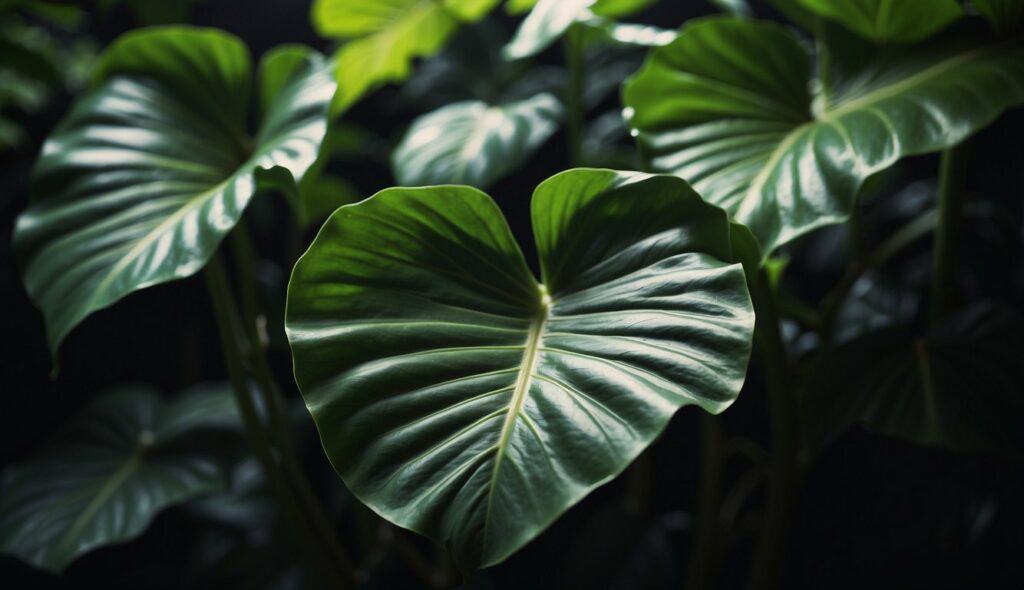
The Alocasia Amazonica, also known as the African Mask plant, is a tropical plant that is native to Southeast Asia.
It is known for its large, arrow-shaped leaves that are dark green with white veins.
The plant can grow up to three feet tall and requires bright, indirect light and regular watering to thrive.
One interesting fact about the Amazonica is that it is often used in Feng Shui practices to bring positive energy and good luck to a space.
The Alocasia Macrorrhizos, also known as the Giant Taro or Elephant Ear plant, is a tropical plant that is native to Asia and Australia.
It is known for its massive, heart-shaped leaves that can grow up to three feet long and two feet wide.
The plant can grow up to ten feet tall and requires bright, indirect light and regular watering to thrive.
One interesting fact about the Macrorrhizos is that its leaves are often used in traditional medicine to treat a variety of ailments, including respiratory issues and skin conditions.
Alocasia Basics
Defining Alocasia
Alocasia is a genus of flowering plants that belongs to the Araceae family.
These plants are popularly known as elephant ears due to their large, heart-shaped leaves.
Alocasia plants are native to tropical and subtropical regions of Asia and Eastern Australia.
The plants in this genus are often grown as ornamental plants because of their unique foliage.
Alocasia leaves can grow up to 3 feet long and 2 feet wide, and they come in a variety of colors and patterns.
Some species have leaves that are green, while others have leaves that are variegated with white, yellow, or pink.
Species Overview
There are over 70 species of Alocasia, but two of the most popular ones are Alocasia amazonica and Alocasia macrorrhizos.
Alocasia amazonica, also known as African Mask Plant, has dark green leaves with white veins.
It is a relatively small plant that can grow up to 2 feet tall.
Alocasia macrorrhizos, also known as Giant Taro or Elephant Ear, is a much larger plant that can grow up to 15 feet tall in its natural habitat.
Its leaves can grow up to 4 feet long and 3 feet wide, and they have a glossy, dark green color.
This species is often grown as a garden plant in tropical and subtropical regions.
Overall, Alocasia plants are easy to care for and make great additions to any indoor or outdoor space.
With their unique foliage and interesting shapes, they are sure to add a touch of exotic beauty to any garden or home.
Alocasia Amazonica
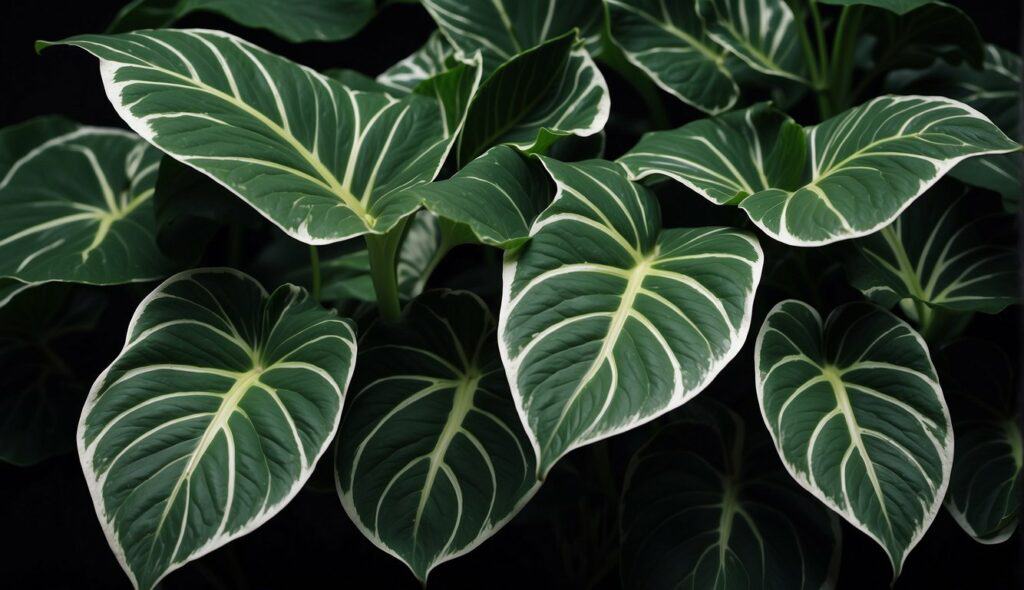
Alocasia Amazonica, also known as Elephant Ear or African Mask, is a popular houseplant with striking foliage.
It is native to Southeast Asia and belongs to the Araceae family.
Cultivation Tips
Alocasia Amazonica requires bright, indirect light and well-draining soil. It prefers high humidity and temperatures between 60-80°F.
Overwatering can lead to root rot, so it’s important to let the soil dry out slightly between waterings.
Fertilize every two weeks during the growing season with a balanced fertilizer.
Distinct Features
The leaves of Alocasia Amazonica are dark green with prominent white veins, giving them a unique appearance.
The leaves can grow up to 2 feet long and are shaped like an arrowhead. The plant can reach up to 3 feet in height and 2 feet in width.
The stems are thick and sturdy, providing support for the large leaves.
Overall, Alocasia Amazonica is a stunning and relatively easy-to-care-for plant that can add a touch of tropical elegance to any indoor space.
Alocasia Macrorrhizos
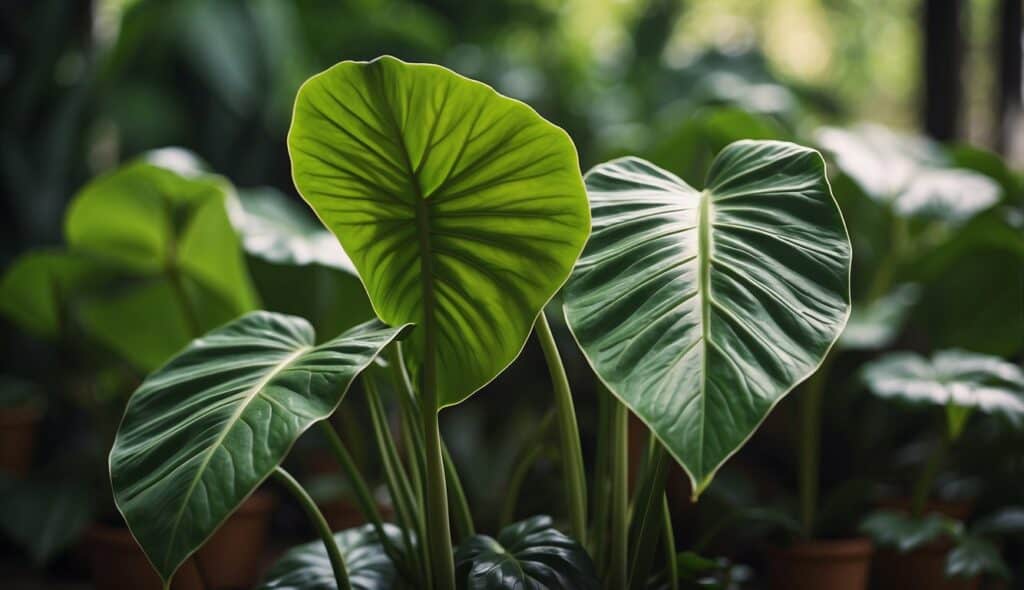
Alocasia Macrorrhizos, also known as Giant Taro or Elephant Ear, is a tropical plant native to Asia.
It is a popular ornamental plant because of its large, glossy leaves that can grow up to 3 feet long and 2 feet wide.
Traditional Uses
In some cultures, the leaves and stems of Alocasia Macrorrhizos are used for medicinal purposes.
The plant has anti-inflammatory and anti-bacterial properties and is used to treat various ailments such as fever, cough, and wounds.
The plant is also used in traditional ceremonies and is believed to bring good luck and fortune.
Growth and Care
Alocasia Macrorrhizos is a relatively easy plant to care for. It prefers bright, indirect light and well-draining soil.
The plant should be watered regularly, but the soil should not be allowed to become waterlogged.
Overwatering can cause root rot, which can be fatal to the plant.
The plant can grow up to 6 feet tall and 4 feet wide, so it is important to give it plenty of space to grow.
Alocasia Macrorrhizos also benefits from regular fertilization during the growing season.
Overall, Alocasia Macrorrhizos is a beautiful and versatile plant that can add a tropical touch to any home or garden.
With proper care, it can thrive for many years and provide enjoyment to its owner.
Frequently Asked Questions
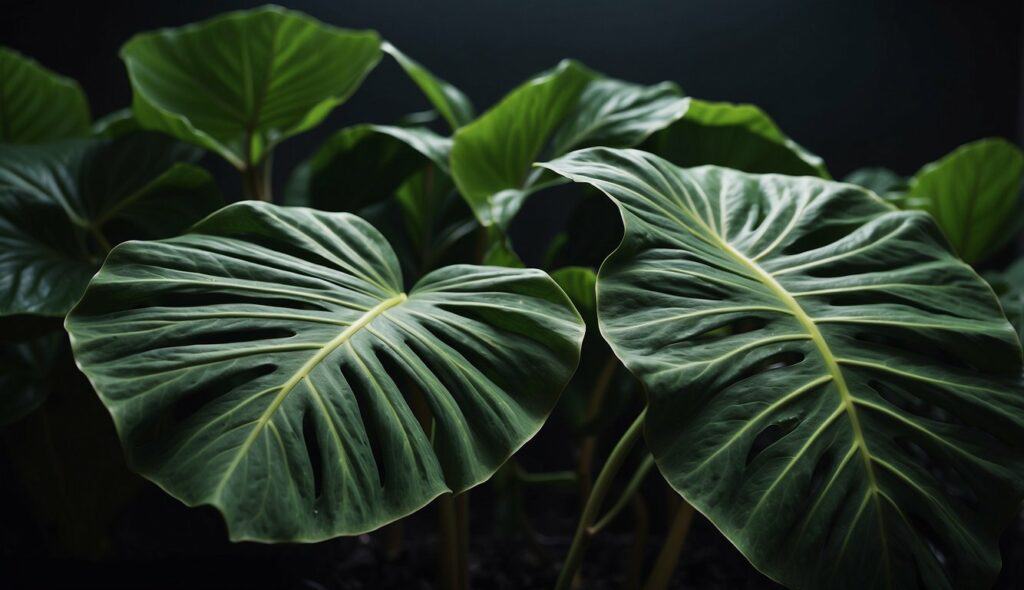
How should I care for my Alocasia plant indoors?
Alocasia plants prefer bright, indirect light and well-draining soil.
Keep the soil moist but not waterlogged, and avoid letting the plant sit in standing water.
Alocasia plants also benefit from occasional misting to increase humidity levels.
What are the water needs for Alocasia plants?
Alocasia plants require consistent moisture, but they do not tolerate overwatering.
Water the plant when the top inch of soil feels dry to the touch, and be sure to allow excess water to drain away from the plant.
Is Alocasia considered an easy plant to maintain?
Alocasia plants can be a bit finicky and require some attention to thrive.
However, with proper care and attention, they can be a rewarding addition to your indoor plant collection.
What benefits do Alocasia indoor plants provide?
Alocasia plants are known for their striking foliage and can add a touch of tropical elegance to any indoor space.
They also help purify the air by removing toxins and increasing oxygen levels.
Why are the leaves on my Alocasia turning yellow?
Yellowing leaves can be a sign of overwatering or underwatering, as well as a lack of humidity or nutrient deficiencies.
Check the soil moisture levels and adjust watering accordingly, and consider increasing humidity levels or fertilizing the plant.
How much sunlight does an Alocasia require to thrive?
Alocasia plants prefer bright, indirect light but can also tolerate some shade.
Avoid direct sunlight, as this can scorch the leaves and cause damage to the plant.










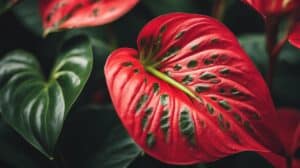

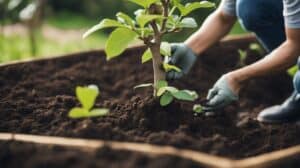


Add Comment